Getting to know The Way of the Pilgrim
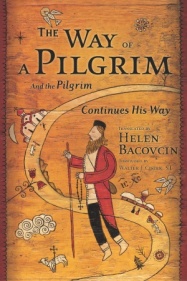
The Way of a Pilgrim was written by an unknown nineteenth-century Russian peasant and tells of his constant wrestling with the problem of ‘how to pray without ceasing.’ Through his journeys and travels, and under the tutelage of a spiritual father, he becomes gradually more open to the promptings of God. The reader is enriched as he shares these religious experiences in a most humble, simple, and beautiful narrative. — Summary at the beginning of the Doubleday version of The Way of a Pilgrim And the Pilgrim Continues His Way (Translated by Helen Bacovcin, 1985).
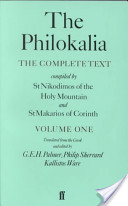
Although it is unclear who authored this piece of 19th century Russian spiritual literature, possibly a interweaving of the stories of several mendicant (i.e., begging) pilgrims and/or a teaching narrative by two Greek monks, The Way of a Pilgrim And the Pilgrim Continues His Way is for the most part based on The Philokalia (1782). In Greek, philokalia means “love of the beautiful, the good” in Greek. The Philokalia is a collection of writings by the Eastern monastic fathers (4th – 15th century). St. Nikodimos of the Holy Mountain (Mount Athos) and St. Makarios of Corinth compiled The Philokalia in the context of a collection of 20 Greek Orthodox monastic communities at Mount Athos (“the Holy Mountain”), Greece. In case you were unaware, Mount Athos was formally founded in 963 and has remained not only for the most part sovereign, but also entirely without women and children for its whole existence. Some say that the influence of The Philokalia in Eastern Orthodoxy is only surpassed by the Bible. According to the summary on Google books (also a helpful place to read the introduction and excerpts from the book):
[The Philokalia] is concerned with themes of universal importance: how man may develop his inner powers and awake from illusion; how he may overcome fragmentation and achieve spiritual wholeness; how he may attain the life of contemplative stillness and union with God.
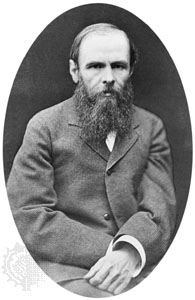
The pilgrim’s inner journey begins when he is struck by hearing Paul’s call to “pray without ceasing” (I Thessalonians 5:17). His search for understanding, most probably with a Slavonic translation of the Philokalia in hand, leads him to numerous personal churches, monasteries, and personal conversations along the way. A starets (“spiritual father”) not only teaches him the Jesus Prayer—”Lord Jesus Christ have mercy on me”—but also sparks an actual spiritual revival in 19th century Russia through the popularity of The Way of a Pilgrim. The Russian writer Fyodor Dostoevsky (1821 – 1881) , who pioneered existentialism and was the author of a number of significant pieces including Notes from Underground (1864), The Idiot (1868), and The Brothers Karamazo (1880) , was among those touched by this spiritual revival. The story and the interest in hesychasm spread to the United States, resulting in the Jesus Prayer joining the Lord’s Prayer and Hail Mary as the frequently prayed prayers across Western Christianity. As a matter of fact, The Way of a Pilgrim continued to grow in popularity in 20th century America with J. D. Salinger‘s “zen-like” reading of it in Franny and Zooey (1961), see below.
BUT hesychasm has not been without critics from the beginning. To learn more from the perspective of Eastern Orthodoxy I read “On Union With God and Life of Theoria by Kallistos Katafygiotis (Kallistos Angelikoudis)” (Greekorthodoxchrch.org. N.p., n.d. Web. 12 Aug. 2013). I found it offered a helpful perspective on the Eastern Orthodox understanding of “Union with God” (i.e., theosis) and definition of Hesychia, hesychast, hesychastic:
Silence, stillness. Stilling of the thoughts, but not emptiness, whereby the nous may descend into the heart through the Jesus prayer. It is the inner attentiveness in prayer which brings the remembrance of God and the grace of the Holy Spirit.
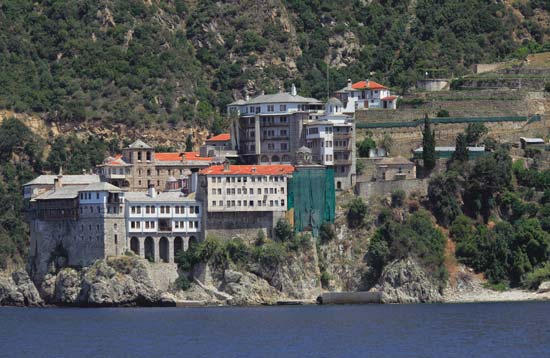
In various readings I found that the apophatic practice [i.e., negative approach to God which emphasizes ineffability (indescribable nature) of God] reached necessity of theological defense in the mid-14th century. Gregory Palamas (1296–1359) from Mount Athos took the mantel for this task in synods in Constantinople. Note: In Lecture 7: An Overview of the Hesychast Controversy of Orthodox and Roman Catholic Relations from the Fourth Crusade to the Hesychastic Controversy (Etna, CA: Center for Traditionalist Orthodox Studies, 2001, pp. 199‒232), one reads of how the practice and the theology are significant in Eastern Orthodoxy’s challenge to papal authority).
Not only is the experiential, bordering on mantra (with similarities to Buddhist/Hindu) approach to prayer of concern from the outside, some who practice hesychasm are frustrated by the impression given by The Way of a Pilgrim that one can pick up the practice without much labor of time. The interview of Alexey Ilyich Osipov, Professor of the Moscow Theological Academy, by Adrian (Pashin), Hieromonk, i.e., The Way of a Pilgrim and Bishop Ignatius (Brianchaninov’s) Teaching on Prayer (A Russian Orthodox Church Website, N.p., 17 May 2011. Web. 12 Aug. 2013), is excellent on this topic. Osipov’s critique of a Roman Catholic surge of interest in using the Jesus Prayer in a quick, mantra-like approach to connecting with God is applicable to some Protestant circles. In my humble opinion, through discernment the practice is a helpful bridge between Eastern Orthodoxy and Western Christendom (see above note on Lecture 7: An Overview of the Hesychast Controversy).. May we be careful to practice with humility, even in the context of a community guided by the Word and those trained in “the Way.”
Before turning to some reflections/applications on The Way of a Pilgrim And the Pilgrim Continues His Way (1884), a few events to keep in mind with regard to the late 19th century historical context of this Christian Devotional Classic.
- The 19th century saw the collapse of a number empires and the rise of others. In the early 19th century, Napoleon had been defeated after over extending himself by fighting across Europe, from Britain to St. Petersburg. Although this led to the British Empire dominating much of the globe, the Russian tsar ruled a large territory from Poland to the Pacific Ocean. In this large empire, the peasants were poor and not satisfied with their life.
- 1880: Russian composer Pyotr Ilyich Tchaikovsky wrote The Overture of 1812 to commemorate Russia’s defeat of Napoleon. The overture debuted in Moscow in 1882.
- 1881 Tsar Alexander II is assassinated.
- Although religious practices encouraged by the The Way of a Pilgrim provided hope through a connection with with God as part of the Eastern Orthodox tradition, by the early 20th century revolution was the response. AND Communism came to power shortly afterward.
- Although the 19th century was known for the Industrial Revolution, birthed in Great Britain, Russia did not begin to catch-up until the late 19 century with a second strong push after World War I. In my brief reading, it was hard to discern whether serfdom or dormitory based industrialization was more difficult for the lower classes.
- 1861: The emancipation of serfs transformed the power relationship between the “landed aristocracy” and large supply of free labor for the cities (and the industrial revolution) and those stayed in the villages.
- Railway was slow in development, only to cross the nation in the early 20th century. By contrast the first transcontinental railroad was completed in United States in 1869.
- Leading to the longing for another way . . .
- Intellectually . . .
- Nihilism was on the rise in Russian in the 1860’s.
- Significant literary figures in Russia include:
- Fyodor Dostoevsky (1821 – 1881)
- Leo Tolstoy (1828 – 1920) wrote War and Peace(1869) — continuing to play out the conflict with Napoleon,Anna Karenina(1873–1877), The Death of Ivan Ilyich (1886).
- Karl Marx (1818 – 1883) wrote The Communist Manifesto (1848) and Das Kapital (1867–1894).
- 1879: Thomas Edison tests his first light bulb.
- 1884: Mark Twain publishes The Adventures of Huckleberry Finn.
Do you have material to add to the context of reading, reflecting upon, and discussing The Way of a Pilgrim And the Pilgrim Continues His Way (1884)? Note: Just before going live I came across a free on-line version, a different translation, at http://desertfathers.webs.com/thewayofthepilgrim.htm.
Joining the Pilgrim on the Way?
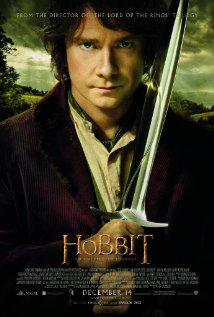
Daily Reflections for the course of a week from which you pick up this post. Drawn from drafts I posted on the Emerging Scholars Network Facebook Wall as part of a course on Christian Devotional Classics at Evangelical Seminary. Please email me know if you use this section to stimulate campus discussion (e.g., brown bag lunch discussion group). I am particularly interested in suggestions on revisions for use in that context.
1. For Deeper Reflection upon the introductory material: I picked up The Way of a Pilgrim the morning after restarting a reading of The Fellowship of the Ring and watching The Hobbit: An Unexpected Journey (2012) with one of my daughters. As Gandalf shares with Bilbo, “I’m looking for someone to share in an adventure” (The Hobbit, 2012).
Ready for an adventure, or should I say pilgrimage? What are your thoughts about “unceasing prayer” (1 Thessalonians 5:17, Ephesians 6:18, I Timothy 2:8)? Do you engage in some form of “unceasing prayer” throughout your day or do you find this difficult (even impossible) in your work, study, rest, relationships, play . . . “Lord Jesus Christ, have mercy on me!”*
2. “On the spiritual level the story is a real treasure. The Pilgrim is deeply in love with his God and never tires of communicating with Him. Through this constant communion with his Lord and Master he gains much wisdom and understanding; he learns that true riches are of the spirit and are accessible to all. He knows as few of us do that a whole hearted response to the message of the Gospel is the only one that makes sense and satisfies the very core of our being. He knows that to give God one’s all means in the truest sense to gain all. He knows that the cost of discipleship will never begin to measure up to the rewards which await the faithful disciple who does the will of the Father, both here and hereafter. He knows the secret of interior freedom and what it means to have one’s hunger and thirst satisfied. He knows the beauty of each creature. He knows the deep, abiding joy and peace which surpass all understanding. Yes, he knows how ABSOLUTELY WONDERFUL God is in His love and mercy to all His children but especially to those who unconditionally open their hearts to Him.” — Helen Bacovcin in the “Preface” to The Way of a Pilgrim And the Pilgrim Continues His Way (xiv).
For Deeper Reflection: “Bilbo Baggins: Can I help you? Gandalf: That remains to be seen.” — The Hobbit: An Unexpected Journey (2012).
Is The Way of a Pilgrim And the Pilgrim Continues His Way really as good as Helen Bacovcin claims? I confess a cynicism when reading such rave reviews. Is this a trait of the “educated/enlightened mind” of the modern age or skepticism as ancient as the dwarves (even at times the wizards) of MiddleEarth? Is it particularly biased against religious works?
I must confess that The Way of a Pilgrim And the Pilgrim Continues His Way has sat on my shelf as I waited for a time to read in unhurried solitude. Now I find myself reading it for an assignment in the midst of a busy summer vacation for the girls, i.e., they’re out of school(!). Can I truly “Take up and read; Take up and read” in a manner which I receive “the real treasure” of The Way of a Pilgrim And the Pilgrim Continues His Way?
“Lord Jesus Christ, have mercy on me!”*
3. “By the grace of God I am a Christian, by my deeds a great sinner, and by my calling a homeless wanderer of humblest origin, roaming from place to place. My possessions consist of a knapsack with dry crusts of bread on my back and in my bosom the Holy Bible. This is all!” (3).
For Deeper Reflection: So begins The Way of a Pilgrim. I confess that I have little in my rooted family life in 21st Century Lancaster County, PA, or campus experience with InterVarsity, enabling me to truly join a religious pilgrim though the villages and countryside of mid-19th century Russia. The pilgrim with a withered hand and a broken family requires not only food and shelter with what initially appears to be little in ability to give in return, but also counsel regarding how to pray constantly (I Thess. 5:17, Eph 6:18, I Tim 2:8). Upon further reflection, I question whether such a life is reproducible in post-Communist Russia, let alone 21st Century America. But the deep longing to draw close to God, to be in continual communion through practices such as unceasing prayer, invites the reader to come along none-the-less.
Last summer I had opportunity to hear J.P. Moreland, Distinguished Professor of Philosophy at Talbot School of Theology, Biola University, http://www.jpmoreland.com/, present on a number of topics. At one point he highlighted how he came out depression by the reciting of Scripture texts throughout the day — they not only resisted the evil one, but brought spiritual strength/joy. This practice became regular habit, no doubt similar to what the Superior of the monastery passed onto the pilgrim early in his journey, “‘I do not know how to make this clear, dear brother. But wait, I have a book which has an explanation,’ and he brought a copy of Demetrius’s ‘Spiritual Instructions for the Interior Man’ and indicated which page I should read. I began reading the following, ‘The words of the Apostle ‘Pray constantly.’ are to be understood as referring to mental prayer; the mind can be constantly fixed on God and communion with Him'” (5). The Pilgrim’s response is, “Please explain to me how the mind can be always set on God, not be distracted but continuously praying” (5).
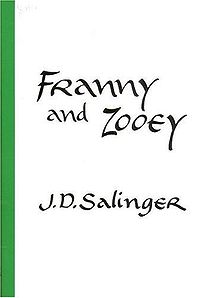
How do you think the Superior answers the Pilgrim’s question? How do you answer the question in your daily life? Remember J. D. Salinger‘s “zen-like” reading of The Way of a Pilgrim as presented in Franny and Zooey (1961). Ever find yourself in such a conversation? “Classic” texts span time, place, and culture in an amazing manner. Comments on Franny and Zooey in the next two section. “Lord Jesus Christ, have mercy on me!”*
4. “Please explain to me how the mind can be always set on God, not be distracted but continuously praying” [the pilgrim].
“‘This is exceptionally difficult to understand unless God Himself reveals it,’ said the Father Superior and he did not explain” (5).
For Deeper Reflection: Is the Superior’s answer acceptable in our current academic context? Well, don’t assume the “simple” Russian pilgrim from the 19th century was satisfied by the Superior’s answer to his quest to know, love, and continually be in communion with the God of the Bible. The pilgrim’s cross-country mid-19th century Russian research project of the religious (lay and ordained) was unceasing and he carried the Bible (and later the Philokalia — instructions on prayer) every step of the way. During that time the pilgrim was committed to the hesychast approach of praying the Jesus prayer [Lord Jesus Christ, Son of God, have mercy on me], i.e., continual repetition with much preference to doing such in solitude drawn from the Philokalia. The Way of a Pilgrim ends in extended conversation with a professor and a monk regarding prayer. Yes, a teaser
What I find special, in contrast to the wrestlings of J.D. Salinger’s characters in Franny and Zooey (1961), is the humility of the pilgrim and those who come alongside to aid in the pilgrim’s journey to enter into communion with the God of the Bible. Furthermore, although the pilgrim seeks solitude and separation from life to be close to God, the pilgrim interacts with real life again and again — a mutuality of learning between people, leading to a continual sharing of joyful praise for God’s provision (which may be what I most appreciate about the book!).
Despite the pilgrim’s practice of prayer connected with solitude, in the end he does not lead a secluded life. He is a little Christ to many and interacts with/encourages many little Christs (and draws some to come closer to Christ through his journey — dare I say “ministry”). My guess is that Salinger would posit that meditation/prayer “saves”/heals, crossing religions. The pilgrim would disagree, Christ alone saves/heals and the Bible is not be lost in one’s spiritual journey. The Christ came in the flesh and by the Spirit continues to do such in each and every one of His followers, working out the Father’s Kingdom here and now. . . . leading us as the Body of Christ to place great anticipation in the New Heaven and New Earth. Come, Lord Jesus, come!
“Lord Jesus Christ, have mercy on me!”*
5. “For a month I walked quietly and I became deeply aware of how edifying and encouraging good examples are. I read from the ‘Philokalia’ and checked everything which I had told my blind friend about the Prayer. His inspiring example enkindled in me fervor, gratitude, and love toward the Lord. The prayer of the heart consoled me to such a degree that I considered myself the happiest man on earth and I wondered whether the beatific vision could bring any greater consolation. Not only was I experiencing deep interior joy but I sensed a oneness with all of God’s creation; people, animals, trees, and plants all seemed to have the name of Jesus Christ imprinted upon them. At times I felt such freedom of movement that it seemed I had no body which walked but I was delightfully carried through the air; at other times I descended within myself, I clearly saw all my organs and was astonished at the wisdom of the composition of the human body; at still other times I felt as happy as a king and with all these consolations I had a great desire to die and be poured out in praise and thanksgiving at the feet of Christ in the world of the spirit ” (78).
For Deeper Reflection: Truly no surprise that some in our “time”/culture, e.g., Franny as portrayed by J.D. Salinger in Franny and Zooey (1961), long for such happiness. Despite the pilgrim’s focus upon readings and solitude, the flame of his devotion to the Lord is fanned in great measure by the example of, personal interaction with, encouragement from, and mentoring (at times mutual) by other Christ-followers. Yesterday at the Penn State College of Medicine, a student leader and I discussed how to be about offering our head, heart, and hands to the LORD. Such a life cannot help but lead to questions and conversation in such a tight knit academic environment. How do we continue to press on as salt, light, and leaven in higher education? Prayer (Adoration, Confession, Thanksgiving, Supplication), the Word (study/contemplation individually and corporately), resting in Christ alone with confidence that His Way is the Real Way/World (at times affirmed by word, other times by action and still others by silence), the encouragement of other Christ-followers who have gone before and journey with us now, rejoicing in the gifts of God through others/the creation (formal and continual worship/celebration/gratitude), daily/weekly habits of offering ourselves before God . . . May we be poured out before the feet of Christ. More on spiritual disciplines, developing a way/rule of life in the context of higher ed.
“Lord Jesus Christ, have mercy on me!”*
6. “But either I took too great a delight in these consolations or perhaps God permitted me to be tried, because for some time I experienced fear and trembling in my heart. I wondered whether another misfortune was in store for me . . . Clouds of thoughts overwhelmed me and I remembered the words of John of Carphatos that to help another spiritually one must submit to disgrace, misfortune, and temptations. So, struggling with these thoughts, I redoubled my prayer and succeeded in dispelling them as I prayed, ‘May God’s will be done! I am ready to suffer all that Christ Jesus permits to come to me to for my sinful and proud disposition.’ I realized that those to whom I had recently revealed the mystery of interior prayer of the heart were prepared for it by God’s secret teaching even before my encounter with them. I regained my peace and continued on my way happier than before.
For two days it rained and the road was so muddy that I could hardly pull my feet out of the mud; and I walked through the steppes for fifteen versts [a Russian measure of linear distance, equivalent to about two thirds of a mile] without seeing any settlements. And then at last by evening I saw a courtyard close to the road and I thought happily, I will ask for lodging here, and tomorrow, God willing, the weather will be better” (78).
For Deeper Reflection: This text directly follows the material posted in 5. As I post this I am praying for you, whether you are filled with joy or trembling, whether you journey in the blessing of the sun or rain. May you dwell in Christ, be a little Christ, and find Christ in whatever “door” you open today. If you have specific prayer requests, email the Emerging Scholars Network.
Pray for me as invest in significant conversations about “retooling” not only the Emerging Scholars Network, but also the Graduate & Faculty Ministry’s website. Please keep sending recommendations as to how we may serve you in your academic journey.
“Lord Jesus Christ, have mercy on me!”*
7. “[T]hough the Gospel comforts me on my journey, enlightens my dull mind, and warms my cold heart, I have to acknowledge my doubts openly and admit that the conditions for holiness and salvation which demand such complete selflessness, extraordinary deeds, and deep humility frighten me by their very magnitude because of my weakness and my past sins. I stand between despair and hope and know not what awaits me in the future.” — The Professor in The Way of a Pilgrim And the Pilgrim Continues His Way, 132-133.
For Deeper Reflection: I found the shift from the personal journey of the pilgrim seeking understanding regarding praying constantly (I Thess 5:17, Eph 46:18, I Tim 2:18) to one shared with the professor profound. The Pilgrim Continues His Way begins by the pilgrim updating his spiritual father on his journey and how he has come to know the professor. The rest of the book is a dialogue between the spiritual father (later referred to as the ‘elder’), the professor, a monk, a priest, and Christ Himself regarding praying constantly.
By God’s grace, I pray that you have opportunities for such rich dialogues on a variety of topics on your campus, in your community, as part of a local congregation . . . When you engage in dialogue, remember that Christ is present. The Elder highlights this reality by sharing, “We have Christ’s word that where there are two or more gathered in His name, there He is among them, and since there are five of us assembled in His name, we can count on a most generous outpouring of His grace” (128). Furthermore, remember that such conversations are to be filled with charity and humility, enriching one-another as brothers and sisters in Christ, i.e., not tearing one-another down. Note: What a set-up for reflecting upon St. Aelred of Rievaulx‘s (1110 – 1167) Spiritual Friendship (1164-67) — click here.
The Pilgrim Continues His Way concludes with the Elder’s prayer for the pilgrim and the professor as they continue their journey to a monastery, “I pray that the God of peace, who brought our Lord Jesus Christ back from the dead to become the great Shepherd of the sheep by the blood that sealed an eternal covenant, may make you ready to do his will in any kind of good action; and turn us all into whatever is acceptable to himself through Jesus Christ, to whom be glory for ever and ever. Amen.” (Heb 13:20-21). Such is my prayer for us today. To God be the glory!
“Lord Jesus Christ, have mercy on me!”*
*The Jesus Prayer. The focus of “unceasing prayer” in The Way of a Pilgrim And the Pilgrim Continues His Way.
Tom enjoys daily conversations regarding living out the Biblical Story with his wife Theresa and their four girls, around the block, at Elizabethtown Brethren in Christ Church (where he teaches adult electives and co-leads a small group), among healthcare professionals as the Northeast Regional Director for the Christian Medical & Dental Associations (CMDA), and in higher ed as a volunteer with the Emerging Scholars Network (ESN). For a number of years, the Christian Medical Society / CMDA at Penn State College of Medicine was the hub of his ministry with CMDA. Note: Tom served with InterVarsity Christian Fellowship / USA for 20+ years, including 6+ years as the Associate Director of ESN. He has written for the ESN blog from its launch in August 2008. He has studied Biology (B.S.), Higher Education (M.A.), Spiritual Direction (Certificate), Spiritual Formation (M.A.R.), Ministry to Emerging Generations (D.Min.). To God be the glory!

Leave a Reply